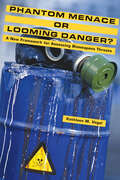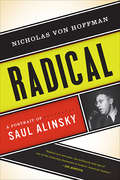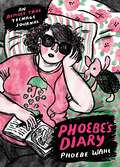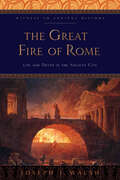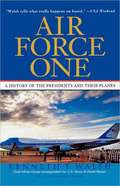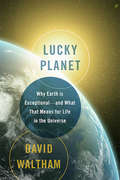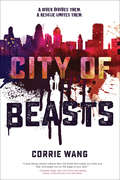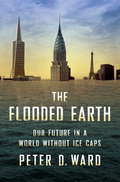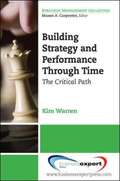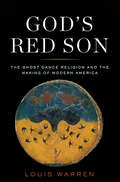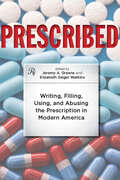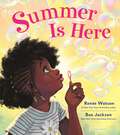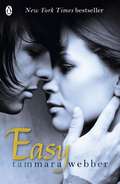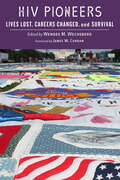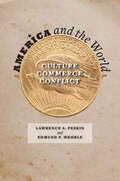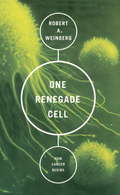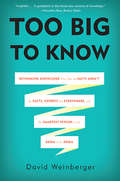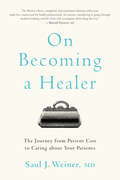- Table View
- List View
Phantom Menace or Looming Danger?: A New Framework for Assessing Bioweapons Threats
by Kathleen M. VogelThe horrifying terrorist attacks on September 11, 2001, and the anthrax strikes that soon followed gave the United States new reason to fear unconventional enemies and atypical weapons. These fears have prompted extensive research, study, and planning within the U.S. military, intelligence, and policy communities regarding potential attacks involving biological weapons. In Phantom Menace or Looming Danger?, Kathleen M. Vogel argues for a major shift in how analysts assess bioweapons threats. She calls for an increased focus on the social and political context in which technological threats are developed.Vogel uses case studies to illustrate her theory: Soviet anthrax weapons development, the Iraqi mobile bioweapons labs, and two synthetic genomic experiments. She concludes with recommendations for analysts and policymakers to integrate sociopolitical analysis with data analysis, thereby making U.S. bioweapon assessments more accurate. Students of security policy will find her innovative framework appealing, her writing style accessible, and the many illustrations helpful. These features also make Phantom Menace or Looming Danger? a must-read for government policymakers and intelligence experts.
Radical: A Portrait of Saul Alinsky
by Nicholas von HoffmanFrom Left to Right, one man has influenced them all: Saul Alinsky. Radical is a personal portrait of this controversial mastermind of popular movements, a man who is often called the American Machiavelli. The tactics and strategy of Alinsky, who died in 1972, have been studied by people as diverse as Barack Obama, Cesar Chavez, Hillary Clinton, Dick Armey, the Tea Partiers, and activists and organizers of every persuasion. Thousands of organizations around the country owe their inspiration and origins to Alinsky—who is to community organizing what Freud is to psychoanalysis. As told by his friend and protégé Nicholas von Hoffman, whom Alinsky dubbed &“in all the world my favorite, drinking, talking, and thinking companion,&” Radical is an intimate look at the man who made a career of arming the powerless and enraging the powerful. From Alinsky&’s smuggling guinea pigs into the Joliet state penitentiary to the famous Buffalo fart-in. von Hoffman&’s book reveals the humor as well as the ideals and anger that drove Alinsky to become a major figure in a democratic tradition dating back to Tom Paine. Many of the stories about politicians, bishops, gangsters, millionaires, and labor leaders, which Alinsky did not want made public in his lifetime, are told here for the first time in Radical. Von Hoffman captures Alinsky&’s brilliant critique of Dr. Martin Luther King, Jr.&’s organizational tactics and where and why they succeeded or failed. It was a career that began in the politics and violence of the Great Depression and worked its way through the Communist threat, the racial struggles, and the Vietnam War protests of the second half of the twentieth century. The first book to explain why so many have co-opted Alinsky&’s ideas, and the first to explain why so many contemporary politicians misunderstand his message, Radical will become essential reading for anyone interested in American politics, past and present.
Radical: A Portrait of Saul Alinsky
by Nicholas von HoffmanFrom Left to Right, one man has influenced them all: Saul Alinsky. Radical is a personal portrait of this controversial mastermind of popular movements, a man who is often called the American Machiavelli. The tactics and strategy of Alinsky, who died in 1972, have been studied by people as diverse as Barack Obama, Cesar Chavez, Hillary Clinton, Dick Armey, the Tea Partiers, and activists and organizers of every persuasion. Thousands of organizations around the country owe their inspiration and origins to Alinsky -- who is to community organizing what Freud is to psychoanalysis. As told by his friend and proté Nicholas von Hoffman, whom Alinsky dubbed "in all the world my favorite, drinking, talking, and thinking companion," Radical is an intimate look at the man who made a career of arming the powerless and enraging the powerful. From Alinsky's smuggling guinea pigs into the Joliet state penitentiary to the famous Buffalo fart-in. von Hoffman's book reveals the humor as well as the ideals and anger that drove Alinsky to become a major figure in a democratic tradition dating back to Tom Paine. Many of the stories about politicians, bishops, gangsters, millionaires, and labor leaders, which Alinsky did not want made public in his lifetime, are told here for the first time in Radical. Von Hoffman captures Alinsky's brilliant critique of Dr. Martin Luther King, Jr.'s organizational tactics and where and why they succeeded or failed. It was a career that began in the politics and violence of the Great Depression and worked its way through the Communist threat, the racial struggles, and the Vietnam War protests of the second half of the twentieth century. The first book to explain why so many have co-opted Alinsky's ideas, and the first to explain why so many contemporary politicians misunderstand his message, Radical will become essential reading for anyone interested in American politics, past and present.
Phoebe's Diary
by Phoebe WahlINSTANT NATIONAL BESTSELLER! Take a peek inside Phoebe&’s Diary into a bracingly honest illustrated account of the explosive turmoil and joy of adolescence, based on the author&’s actual teenage journals. Meet Phoebe. She is cool and insecure, talented and vulnerable, sexy and awkward, driven and confused, ecstatic and tragic. Like you. And here is her diary, packed full of invaluable friends and heartbreaking crushes, spectacular playlists and vintage outfits, drama nerds and art kids, old wounds and new love. Based on her own teenage diary, Phoebe Wahl has melded truth with fiction and art with text, casting a spell that brings readers deep into the experience of growing up.
The Great Fire of Rome: Life and Death in the Ancient City (Witness to Ancient History)
by Joseph J. WalshPeril was everywhere in ancient Rome, but the Great Fire of 64 CE was unlike anything the city had ever experienced. No building, no neighborhood, no person was safe from conflagration. When the fire finally subsided—after burning for nine days straight—vast swaths of Rome were in ruins. The greatest city of the ancient world had endured its greatest blow. In The Great Fire of Rome, Joseph J. Walsh tells the true story of this deadly episode in Rome's history. He explains why Rome was such a vulnerable tinderbox, outlines the difficulties of life in that exciting and dangerous city, and recounts the fire's aftermath and legacy—a legacy that includes the transformation of much of ancient Rome into a modern city. Situating the fire within the context of other perils that residents of Rome faced, including frequent flooding, pollution, crime, and dangerously shoddy construction, he highlights the firefighting technology of the period and examines the ways in which the city's architecture and planning contributed to the severity of the blaze. Introducing readers to the grim realities of life in that overwhelming and overwhelmed city while chronicling its later glories, The Great Fire of Rome is grounded in the latest scholarship on fire analysis and forensics. Walsh's multifaceted analysis, balanced insights, and concise, accessible prose make this book a versatile teaching tool. Readers interested in ancient (and modern) Rome, urban life, and civic disasters, among other things, will be fascinated by this book.
The Great Fire of Rome: Life and Death in the Ancient City (Witness to Ancient History)
by Joseph J. WalshPeril was everywhere in ancient Rome, but the Great Fire of 64 CE was unlike anything the city had ever experienced. No building, no neighborhood, no person was safe from conflagration. When the fire finally subsided—after burning for nine days straight—vast swaths of Rome were in ruins. The greatest city of the ancient world had endured its greatest blow. In The Great Fire of Rome, Joseph J. Walsh tells the true story of this deadly episode in Rome's history. He explains why Rome was such a vulnerable tinderbox, outlines the difficulties of life in that exciting and dangerous city, and recounts the fire's aftermath and legacy—a legacy that includes the transformation of much of ancient Rome into a modern city. Situating the fire within the context of other perils that residents of Rome faced, including frequent flooding, pollution, crime, and dangerously shoddy construction, he highlights the firefighting technology of the period and examines the ways in which the city's architecture and planning contributed to the severity of the blaze. Introducing readers to the grim realities of life in that overwhelming and overwhelmed city while chronicling its later glories, The Great Fire of Rome is grounded in the latest scholarship on fire analysis and forensics. Walsh's multifaceted analysis, balanced insights, and concise, accessible prose make this book a versatile teaching tool. Readers interested in ancient (and modern) Rome, urban life, and civic disasters, among other things, will be fascinated by this book.
Air Force One: A History of the Presidents and Their Planes
by Kenneth T. WalshFrom the award-winning chief White House correspondent for U.S. News & World Report comes the definitive history of Air Force One. From FDR's prop-driven Pan Am to the glimmering blue and white jumbo 747 on which George W. Bush travels, the president's plane has captured the public's awe and imagination, and is recognized around the world as a symbol of American power. In this unique book, Kenneth Walsh looks at the decisions that our last 12 presidents made on the plane; the personality traits and peccadilloes they revealed when their guard was down; and the way they each established a distinctive mood aboard that was a reflection of their times, as well as their individual personalities. Based on interviews with four living presidents, scores of past and present White House officials, and staff and crew members of Air Force One, Walsh's book reveals countless fascinating stories of life aboard the "flying White House." It also features descriptions of the food, the decor, the bedrooms, the medical clinic, and much more--as well as remarkable photos of the planes (inside and out) and the presidents.
Lucky Planet: Why Earth is Exceptional-and What That Means for Life in the Universe
by David WalthamWhy Earth’s life-friendly climate makes it exceptional-and what that means for the likelihood of finding intelligent extraterrestrial lifeWe have long fantasized about finding life on planets other than our own. Yet even as we become aware of the vast expanses beyond our solar system, it remains clear that Earth is exceptional. The question is: why? In Lucky Planet, astrobiologist David Waltham argues that Earth’s climate stability is what makes it uniquely able to support life, and it is nothing short of luck that made such conditions possible. The four billion year-stretch of good weather that our planet has experienced is statistically so unlikely that chances are slim that we will ever encounter intelligent extraterrestrial others. Citing the factors that typically control a planet’s average temperature-including the size of its moon, as well as the rate of the Universe’s expansion-Waltham challenges the prevailing scientific consensus that Earth-like planets have natural stabilizing mechanisms that allow life to flourish.A lively exploration of the stars above and the ground beneath our feet, Lucky Planet seamlessly weaves the story of Earth and the worlds orbiting other stars to give us a new perspective of the surprising role chance plays in our place in the universe.
City of Beasts
by Corrie WangA teenage girl living in a post-nuclear town embarks on a quest to save her brother from the other side of a dividd world in this dystopian adventure novel for fans of Meg Rosoff's How I Live Now.For seventeen years, fees have lived separate from beasts. The division of the sexes has kept their world peaceful. Glori Rhodes is like most other fees her age. She adores her neighborhood's abandoned Costco, can bench her body weight, and she knew twenty-seven beast counterattack moves by the time she was seven. She has never questioned the separation of the sexes or the rules that keep her post-nuclear hometown safe. But when her mother secretly gives birth to a baby beast, Glori grows to love the child and can't help wondering: What really is the difference between us and them? When her brother, at the age of five, is snatched in a vicious raid, Glori and her best friend, Su, do the unthinkable -- covertly infiltrate the City of Beasts to get him back. What's meant to be a smash-and-grab job quickly becomes the adventure of a lifetime as the fees team up with a fast-talking, T-shirt cannon-wielding beast named Sway, and Glori starts to see that there's more to males, and her own history, than she's been taught.
The Flooded Earth: Our Future In a World Without Ice Caps
by Peter D. WardSea level rise will happen no matter what we do. Even if we stopped all carbon dioxide emissions today, the seas would rise one meter by 2050 and three meters by 2100. This-not drought, species extinction, or excessive heat waves-will be the most catastrophic effect of global warming. And it won't simply redraw our coastlines-agriculture, electrical and fiber optic systems, and shipping will be changed forever. As icebound regions melt, new sources of oil, gas, minerals, and arable land will be revealed, as will fierce geopolitical battles over who owns the rights to them.In The Flooded Earth, species extinction expert Peter Ward describes in intricate detail what our world will look like in 2050, 2100, 2300, and beyond-a blueprint for a foreseeable future. Ward also explains what politicians and policymakers around the world should be doing now to head off the worst consequences of an inevitable transformation.
Building Strategy and Performance
by Kim WarrenThe fundamental challenge facing business leaders is to drive performance into the future--the dynamics of strategy. To tackle this effectively, they need a clear understanding of what causes performance to improve or deteriorate and what power they have to change this trajectory for the better. Without this understanding, they risk making poor choices about their future--failing to exploit promising opportunities, pursuing unachievable aims, or falling victim to competitive and other threats. Building Strategy and Performance Through Time sets the agenda for building business strategy in powerful, actionable, and accessible terms. It gives executives clear frameworks for answering three fundamental questions: * Why is our business performance following its current path? * Where is it going if we carry on as we are? * How can we design a robust strategy to transform this future? The existing strategy tools most widely used help guide management's choices about where to compete--which customers to serve, with what products and services, and how to deliver those products and services to those customers effectively and profitably. While this choice is important, it is not often changed in any fundamental way; having found a reasonably strong and profitable position on these issues, few firms will, or should, set off in a new direction. But there is still much to be done to deliver that strategy, powerfully and sustainably over time. Many decisions need to be made, continually and holistically, across all functions of the business and adapted as conditions change from month to month and year to year. Pricing, product development, marketing, hiring, service levels, and other decisions cannot be made in isolation but must take into account other choices being made, elsewhere and at different times. Building Strategy and Performance Through Time explains a reliable, practical method, known as strategy dynamics, that creates a living picture of how an enterprise actually works and delivers performance. This picture shows exactly where the levers are that management controls and how to choose what to do, when, and how much, to accomplish your specific goals. It shows, too, how the same approach can be used to defeat competitors, cope with other outside forces, and keep delivering performance.
God's Red Son: The Ghost Dance Religion and the Making of Modern America
by Louis S. WarrenThe definitive account of the Ghost Dance religion, which led to the infamous massacre at Wounded Knee in 1890 Winner of the Bancroft Prize in American HistoryIn 1890, on Indian reservations across the West, followers of a new religion danced in circles until they collapsed into trances. In an attempt to suppress this new faith, the US Army killed over two hundred Lakota Sioux at Wounded Knee Creek. In God's Red Son, historian Louis Warren offers a startling new view of the religion known as the Ghost Dance, from its origins in the visions of a Northern Paiute named Wovoka to the tragedy in South Dakota. To this day, the Ghost Dance remains widely mischaracterized as a primitive and failed effort by Indian militants to resist American conquest and return to traditional ways. In fact, followers of the Ghost Dance sought to thrive in modern America by working for wages, farming the land, and educating their children, tenets that helped the religion endure for decades after Wounded Knee. God's Red Son powerfully reveals how Ghost Dance teachings helped Indians retain their identity and reshape the modern world.
God's Red Son: The Ghost Dance Religion and the Making of Modern America
by Louis S. WarrenThe definitive account of the Ghost Dance religion, which led to the infamous massacre at Wounded Knee in 1890Winner of the Bancroft Prize in American History In 1890, on Indian reservations across the West, followers of a new religion danced in circles until they collapsed into trances. In an attempt to suppress this new faith, the US Army killed over two hundred Lakota Sioux at Wounded Knee Creek. In God's Red Son, historian Louis Warren offers a startling new view of the religion known as the Ghost Dance, from its origins in the visions of a Northern Paiute named Wovoka to the tragedy in South Dakota. To this day, the Ghost Dance remains widely mischaracterized as a primitive and failed effort by Indian militants to resist American conquest and return to traditional ways. In fact, followers of the Ghost Dance sought to thrive in modern America by working for wages, farming the land, and educating their children, tenets that helped the religion endure for decades after Wounded Knee. God's Red Son powerfully reveals how Ghost Dance teachings helped Indians retain their identity and reshape the modern world.
Prescribed: Writing, Filling, Using, and Abusing the Prescription in Modern America
by Elizabeth Siegel Watkins Jeremy A. GreeneAmerica has had a long love affair with the prescription. It is much more than the written "script" or a manufactured medicine, professionally dispensed and taken, and worth hundreds of millions of dollars a year. As an object, it is uniquely illustrative of the complex relations among the producers, providers, and consumers of medicine in modern America. The tale of the prescription is one of constant struggles over and changes in medical and therapeutic authority. Stakeholders across the biomedical enterprise have alternately upheld and resisted, supported and critiqued, and subverted and transformed the power of the prescription. Who prescribes? What do they prescribe? How do they decide what to prescribe? These questions set a society-wide agenda that changes with the times and profoundly shifts the medical landscape. Examining drugs individually, as classes, and as part of the social geography of health care, contributors to this volume explore the history of prescribing, including over-the-counter contraceptives, the patient’s experience of filling opioid prescriptions, restraints on physician autonomy in prescribing antibiotics, the patient package insert, and other regulatory issues in medicine during postwar America.The first authoritative look at the history of the prescription itself, Prescribed is a groundbreaking book that subtly explores the politics of therapeutic authority and the relations between knowledge and practice in modern medicine.
Summer Is Here
by Ms Renée WatsonNew York Times bestselling creators Renée Watson and Bea Jackson offer a picture book ode to a picture-perfect summer day, from sunrise to sunset.Summer is here!No dark clouds in the sky, it's a perfect day for play. What joy will summer bring me today?Summer is finally here, and she's bringing the most perfect day! From sunup to sundown, there's so much to do on this lovely summer day. With summer comes fresh fruit, sweet and tangy, jump ropes for leaping and dancing, and friends at the pool swimming and floating. Summer brings family cookouts under shady trees, gardens overflowing, and the familiar song of the ice-cream truck. This beautiful ode to all the season's sensations follows one girl's perfect day in an exploration of joy, family, friendship, sunshine, and wonder.Her stars shimmer like spilled glitter across the sky. I whisper a wish and say goodbye to the day.I wish summer would stay.Renée Watson celebrates iconic childhood joys in this love letter to summer featuring bright, sun-drenched art from Bea Jackson.
Summer Is Here
by Ms Renée WatsonNew York Times bestselling creators Renée Watson and Bea Jackson offer a picture book ode to a picture-perfect summer day, from sunrise to sunset.Summer is here!No dark clouds in the sky, it's a perfect day for play. What joy will summer bring me today?Summer is finally here, and she's bringing the most perfect day! From sunup to sundown, there's so much to do on this lovely summer day. With summer comes fresh fruit, sweet and tangy, jump ropes for leaping and dancing, and friends at the pool swimming and floating. Summer brings family cookouts under shady trees, gardens overflowing, and the familiar song of the ice-cream truck. This beautiful ode to all the season's sensations follows one girl's perfect day in an exploration of joy, family, friendship, sunshine, and wonder.Her stars shimmer like spilled glitter across the sky. I whisper a wish and say goodbye to the day.I wish summer would stay.Renée Watson celebrates iconic childhood joys in this love letter to summer featuring bright, sun-drenched art from Bea Jackson.
Easy (Contours Of The Heart Ser. #1)
by Tammara WebberEasy is a New York Times bestseller - a must-read in the New Adult genre for everyone who loves Slammed by Colleen Hoover or Beautiful Disaster by Jamie McGuire. Deeply romantic and utterly gripping, this is not to be missed."I took a deep breath and exhaled it slowly before turning around. It was Lucas who stood there. His gaze was penetrating, not wavering for a moment, and my pulse hammered under his silent scrutiny.I couldn't remember the last time I'd been so full of pure, unqualified desire."Lucas is the stranger who saved Jacqueline from an attack by a fellow student - she'd never noticed him before then, and now he's everywhere.But can Jacqueline trust him - or will the secrets he's hiding come between them?
HIV Pioneers: Lives Lost, Careers Changed, and Survival
by Wendee M. Wechsberg James W. CurranTremendous strides have been made in the prevention and treatment of HIV since the disease first appeared in the 1980s. But because many of the people who studied and battled the virus in those early days are now gone, firsthand accounts are at risk of being lost. In HIV Pioneers, Wendee M. Wechsberg collects 29 "first stories" from the outset of the AIDS epidemic. These moving personal narratives and critical historical essays not only shed light on the experiences of global health pioneers, prominent scientists, and HIV survivors, but also preserve valuable lessons for managing the risk and impact of future epidemics.With unprecedented access to many key actors in the fight against AIDS and HIV, Wechsberg brings to life the harrowing reality of those early days of the epidemic. The book captures the experiences of those still working diligently and innovatively in the field, elevating the voices of doctors, scientists, and government bureaucrats alongside those of survivors and their loved ones. Focusing on the impact that the epidemic had on careers, pieces also show how governments responded to HIV, how research agendas were developed, and how AIDS service agencies and case management evolved.Illuminating the multiple facets of the HIV epidemic, both in the United States and across the globe, HIV Pioneers is a touching and inspirational look into the ongoing fight against HIV.Contributors: Quarraisha Abdool Karim, Salim S. Abdool Karim, Lynda Arnold, Anne Jeanene Bengoa, Robert E. Booth, Barry S. Brown, Thomas Coates, Francine Cournos, James W. Curran, Don C. Des Jarlais, Jeffrey D. Fisher, William A. Fisher, Samuel R. Friedman, Robert C. Gallo, Mary Guinan, Gibbie Harris, Warren W. Hewitt Jr., Susan M. Kegeles, Rayford Kytle, Bishop Stacey S. Latimer, Robert Love, Duane C. McBride, Clyde B. McCoy, Carmen Morris, Willo Pequegnat, Mary Jane Rotheram-Borus, Jeffrey Samet, David Serwadda, Lorraine Sherr, James L. Sorensen, Jack B. Stein, Charles van der Horst, Wendee M. Wechsberg, Wayne Wiebel, William A. Zule
HIV Pioneers: Lives Lost, Careers Changed, and Survival
by Wendee M. Wechsberg James W. CurranTremendous strides have been made in the prevention and treatment of HIV since the disease first appeared in the 1980s. But because many of the people who studied and battled the virus in those early days are now gone, firsthand accounts are at risk of being lost. In HIV Pioneers, Wendee M. Wechsberg collects 29 "first stories" from the outset of the AIDS epidemic. These moving personal narratives and critical historical essays not only shed light on the experiences of global health pioneers, prominent scientists, and HIV survivors, but also preserve valuable lessons for managing the risk and impact of future epidemics.With unprecedented access to many key actors in the fight against AIDS and HIV, Wechsberg brings to life the harrowing reality of those early days of the epidemic. The book captures the experiences of those still working diligently and innovatively in the field, elevating the voices of doctors, scientists, and government bureaucrats alongside those of survivors and their loved ones. Focusing on the impact that the epidemic had on careers, pieces also show how governments responded to HIV, how research agendas were developed, and how AIDS service agencies and case management evolved.Illuminating the multiple facets of the HIV epidemic, both in the United States and across the globe, HIV Pioneers is a touching and inspirational look into the ongoing fight against HIV.Contributors: Quarraisha Abdool Karim, Salim S. Abdool Karim, Lynda Arnold, Anne Jeanene Bengoa, Robert E. Booth, Barry S. Brown, Thomas Coates, Francine Cournos, James W. Curran, Don C. Des Jarlais, Jeffrey D. Fisher, William A. Fisher, Samuel R. Friedman, Robert C. Gallo, Mary Guinan, Gibbie Harris, Warren W. Hewitt Jr., Susan M. Kegeles, Rayford Kytle, Bishop Stacey S. Latimer, Robert Love, Duane C. McBride, Clyde B. McCoy, Carmen Morris, Willo Pequegnat, Mary Jane Rotheram-Borus, Jeffrey Samet, David Serwadda, Lorraine Sherr, James L. Sorensen, Jack B. Stein, Charles van der Horst, Wendee M. Wechsberg, Wayne Wiebel, William A. Zule
America and the World: Culture, Commerce, Conflict
by Edmund F. Wehrle Lawrence A. PeskinAlthough the twenty-first century may well be the age of globalization, this book demonstrates that America has actually been at the cutting edge of globalization since Columbus landed here five centuries ago.Lawrence A. Peskin and Edmund F. Wehrle explore America's evolving connections with Europe, Africa, and Asia in the three areas that historically have been indicators of global interaction: trade and industry, diplomacy and war, and the "soft" power of ideas and culture. Framed in four chronological eras that mark phases in the long history of globalization, this book considers the impact of international events and trends on the American story as well as the influence America has exerted on world developments. Peskin and Wehrle discuss how the nature of this influence—whether economic, cultural, or military—fluctuated in each period. They demonstrate how technology and disease enabled Europeans to subjugate the New World, how colonial American products transformed Europe and Africa, and how post-revolutionary American ideas helped foment revolutions in Europe and elsewhere. Next, the authors explore the American rise to global economic and military superpower—and how the accumulated might of the United States alienated many people around the world and bred dissent at home. During the civil rights movement, America borrowed much from the world as it sought to address the crippling "social questions" of the day at the same time that Americans—especially African Americans—offered a global model for change as the country strove to address social, racial, and gender inequality. Lively and accessible, America and the World draws on the most recent scholarship to provide a historical introduction to one of today's vital and misunderstood issues.
One Renegade Cell: How Cancer Begins (Science Masters Ser.)
by Robert A. WeinbergCancer research has reached a major turning point, and no one is better qualified to explain the past two deacades' dramatic leaps forward in understanding this disease than world-renowned molecular biologist Robert Weinberg, director of the Oncology Research Laboratory at the Whitehead Institute in Cambridge, Massachusetts. In One Renegade Cell, Weinberg presents a state-of-the-art account of how cancer begins and how, one day, it will be cured.
Too Big to Know: Rethinking Knowledge Now That the Facts Aren't the Facts, Experts Are Everywhere, and the Smartest Person in the Room Is the Room
by David Weinberger"If anyone knows anything about the web, where it's been and where it's going, it's David Weinberger. . . . Too Big To Know is an optimistic, if not somewhat cautionary tale, of the information explosion." --Steven Rosenbaum, ForbesWith the advent of the Internet and the limitless information it contains, we're less sure about what we know, who knows what, or even what it means to know at all. And yet, human knowledge has recently grown in previously unimaginable ways and in inconceivable directions. In Too Big to Know, David Weinberger explains that, rather than a systemic collapse, the Internet era represents a fundamental change in the methods we have for understanding the world around us. With examples from history, politics, business, philosophy, and science, Too Big to Know describes how the very foundations of knowledge have been overturned, and what this revolution means for our future.
Too Big to Know: Rethinking Knowledge Now That the Facts Aren't the Facts, Experts Are Everywhere, and the Smartest Person in the Room Is the Room
by David Weinberger"If anyone knows anything about the web, where it's been and where it's going, it's David Weinberger. . . . Too Big To Know is an optimistic, if not somewhat cautionary tale, of the information explosion." -- Steven Rosenbaum, Forbes With the advent of the Internet and the limitless information it contains, we're less sure about what we know, who knows what, or even what it means to know at all. And yet, human knowledge has recently grown in previously unimaginable ways and in inconceivable directions. In Too Big to Know, David Weinberger explains that, rather than a systemic collapse, the Internet era represents a fundamental change in the methods we have for understanding the world around us. With examples from history, politics, business, philosophy, and science, Too Big to Know describes how the very foundations of knowledge have been overturned, and what this revolution means for our future.
On Becoming a Healer: The Journey from Patient Care to Caring about Your Patients
by Saul WeinerMedical students and physicians-in-training embark on a long journey that, although steeped in scientific learning and technical skill building, includes little guidance on the emotional and interpersonal dimensions of becoming a healer. Written for anyone in the health care community who hopes to grow emotionally and cognitively in the way they interact with patients, On Becoming a Healer explains how to foster doctor-patient relationships that are mutually nourishing. Dr. Saul J. Weiner, a physician-educator, argues that joy in medicine requires more than idealistic aspirations—it demands a capacity to see past the "otherness" that separates the well from the sick, the professional in a white coat from the disheveled patient in a hospital gown. Weiner scrutinizes the medical school indoctrination process and explains how it molds the physician's mindset into that of a task completer rather than a thoughtful professional. Taking a personal approach, Weiner describes his own journey to becoming an internist and pediatrician while offering concrete advice on how to take stock of your current development as a physician, how to openly and fully engage with patients, and how to establish clear boundaries that help defuse emotionally charged situations. Readers will learn how to counter judgmentalism, how to make medical decisions that take into account the whole patient, and how to incorporate the organizing principle of healing into their practice. Each chapter ends with questions for reflection and discussion to help personalize the lessons for individual learners.
On Becoming a Healer: The Journey from Patient Care to Caring about Your Patients
by Saul J. WeinerMedical students and physicians-in-training embark on a long journey that, although steeped in scientific learning and technical skill building, includes little guidance on the emotional and interpersonal dimensions of becoming a healer. Written for anyone in the health care community who hopes to grow emotionally and cognitively in the way they interact with patients, On Becoming a Healer explains how to foster doctor-patient relationships that are mutually nourishing. Dr. Saul J. Weiner, a physician-educator, argues that joy in medicine requires more than idealistic aspirations—it demands a capacity to see past the "otherness" that separates the well from the sick, the professional in a white coat from the disheveled patient in a hospital gown. Weiner scrutinizes the medical school indoctrination process and explains how it molds the physician's mindset into that of a task completer rather than a thoughtful professional. Taking a personal approach, Weiner describes his own journey to becoming an internist and pediatrician while offering concrete advice on how to take stock of your current development as a physician, how to openly and fully engage with patients, and how to establish clear boundaries that help defuse emotionally charged situations. Readers will learn how to counter judgmentalism, how to make medical decisions that take into account the whole patient, and how to incorporate the organizing principle of healing into their practice. Each chapter ends with questions for reflection and discussion to help personalize the lessons for individual learners.
